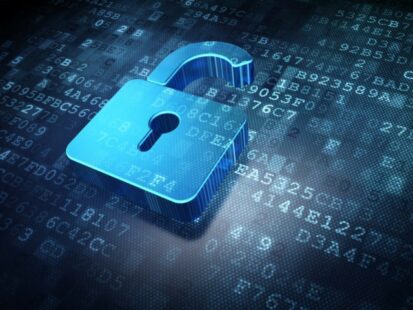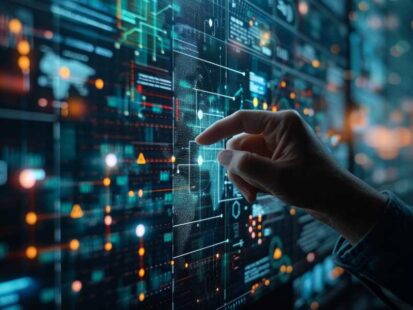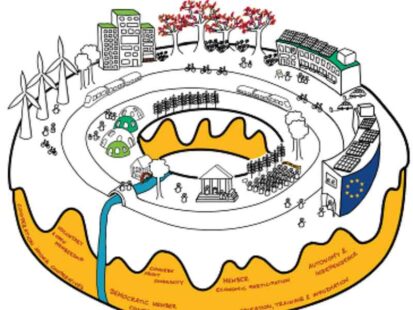
This episode of The List delves into the European Union’s Clean Energy for EU Islands initiative and it’s impact on over 2400 islands within the EU. Our host, Areti Ntaradimou, speaks to Zia Lennard and Cecile Barrere, from EU-funded project NESOI, which aims to facilitate the energy transition on EU islands.
They discuss the challenges and successes of the project, including the differences between islands in the north and south, the importance of capacity building and knowledge exchange, the role of energy communities, and the need for collaboration and funding.
Join us as we explore the complexities of transitioning from fossil fuels to renewables on EU islands and the valuable support provided by projects like NESOI.
The European Union is home to over 2400 islands, many of which rely on expensive fossil fuel imports for their energy supply despite having access to abundant renewable energy sources such as wind and solar. In response to this reality, the EU Commission launched the Clean Energy for EU Islands initiative. This initiative aims to create a long-term framework that enables islands to generate their own sustainable, low-cost energy, thereby reducing energy costs, increasing renewable energy production, enhancing energy security, and promoting economic self-sufficiency.
NESIO is focused on facilitating the energy transition on EU islands through various means including training, technical support, and cooperation opportunities. The conversation focused on the disparities and common challenges faced by different islands, the role of energy communities, the importance of capacity building, and the impact of EU funding.
Listen also to other Podcasts from The EU Projects Zone:
iFLEX with Markus Taumberger
MATRYCS with Francesco Saverio Nucci
PlaMES with Matteo Pozzi
SmartSPIN with Luciano De Tommasi and Ruchi Agrawal
Smart2B with Nuno Mateus
Disparities amongst EU islands
In the podcast, Areti, Zia, and Cecile discuss the striking differences between northern and southern islands when it comes to energy transition. While some islands in the north are already on the route towards full decarbonization and have comprehensive plans for electric vehicles and other sustainable initiatives, those in the south are progressing at a slightly slower pace due to various challenges, including dealing with peak tourist seasons. However, the crucial element for successful energy transition on any island is strong local support. When a core group of people within a municipality is mobilized and committed to the energy transition, it sets the stage for progress and facilitates the involvement of other stakeholders, despite the slow and meticulous process.
Capacity building: bridging knowledge gaps
One of the most significant obstacles identified in the conversation is the limited access to local expertise and the need for knowledge sharing. The NESOI project has directly addressed these two challenges by (i) developing a matchmaking platform to enhance local funding and technology sourcing, and (ii) curating valuable e-learning materials, including the results of NESOI’s Erasmus study tours, where islands learned from the experiences of other islands. These initiatives have proven to be invaluable for islands in different phases of their energy transition journey, serving as a channel for exchanging ideas, gaining practical insights, and building a network of like-minded individuals.
Funding and social challenges
The discussion also shed light on the challenges associated with securing funding and the social aspects of the energy transition. While the islands welcome support and funding, navigating through complex procedures and coping with tight timelines can be stressful. Furthermore, the conversation highlights the variation in the phase of the islands’ energy transition, with some already being carbon neutral and others just beginning their clean energy journey.
Role of energy communities
Energy communities emerged as a pivotal aspect of the clean energy transition. These communities are citizen-driven and collective energy actions that promote energy efficiency within local communities. By empowering citizens to actively participate in the energy transition, energy communities foster public acceptance of renewable energy projects, attract private investments, and contribute to local job creation and reduced energy poverty. Their role in democratizing ownership of energy assets and aligning stakeholders towards a common goal signifies a significant step towards sustainability.
The role of EU-funded projects and digitalization
The integral role of EU-funded projects such as NESOI in enabling the energy transition was evident throughout the conversation. By providing training, technical support, cooperation opportunities, and funding, EU funded projects in general and NESOI in particular not only address the technological aspects but also emphasize community engagement and long-term sustainability. Additionally, the digitalization aspect, including the creation of a matchmaking and capacity building platform. The matching is facilitated between technology providers, funding bodies, and island beneficiaries, while the capacity building is for sharing knowledge, experiences, and project details. This platform showcases a comprehensive approach towards the creation of a one-stop-shop for helping islands and rural communities achieve their clean energy transition.
Final takeaways from the discussion
From disparities amongst the islands to the significance of energy communities and the role of EU-funded projects, it is clear that the clean energy transition for European islands remains a complex but essential endeavor. By fostering collaboration, bridging knowledge gaps, and providing the necessary support and funding, initiatives like Project NESOI are pivotal in driving the transition towards a sustainable energy future for EU islands.
The conversation echoes the need for continued efforts to empower European islands in their clean energy journey. Through collaborative initiatives, capacity building, and a focus on community engagement, these islands can move closer to achieving their clean energy goals while ensuring economic self-sufficiency and environmental stewardship.




